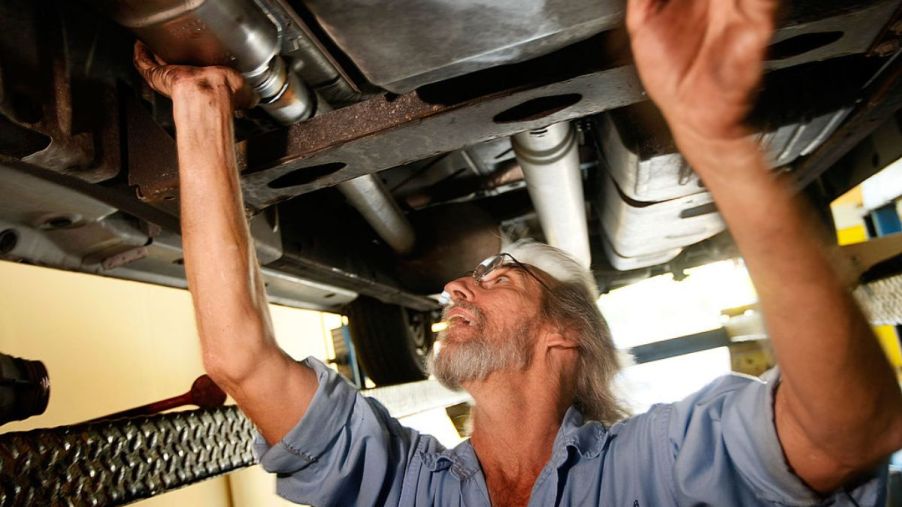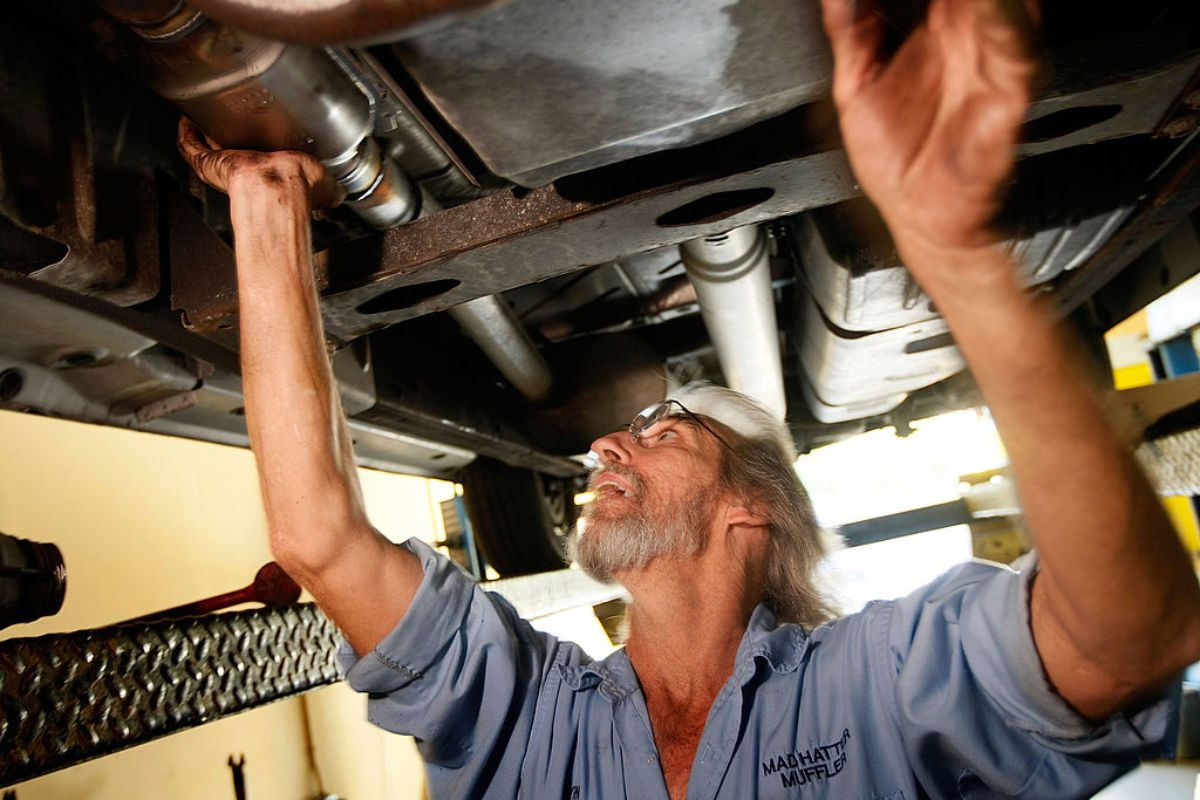
There’s 1 Element Primarily Responsible for Catalytic Converter Clogs
Not many drivers know that cleaning your catalytic converter is an essential car maintenance task. Unfortunately, whenever catalytic converters are highlighted by the media, it’s mainly due to the theft of these auto components. Swiping a catalytic converter is quite easy for thieves, who will take it and sell the scrap for high prices.
A catalytic converter’s value is far from the most important thing about it. It plays an important role in filtering out harmful pollutants from your car’s exhaust system. So what happens when your catalytic converter develops a clog?

How does a catalytic converter work?
As J.D. Power explains, a catalytic converter converts things like nitrogen oxide and carbon monoxide into nitrogen and carbon dioxide. The latter gases are far less harmful to the environment, which means cleaner air and improved gas mileage for your vehicle.
You can find the catalytic converter bolted to the exhaust pipe underneath your vehicle. They usually weigh between 2-7 lbs and are manufactured using a mix of precious metals. These can include palladium, platinum, and rhodium.
All of these metals are in high demand right now, which is why catalytic converter thefts have been on the rise. Additionally, this means that the cost of a catalytic converter replacement is also higher than ever. With parts and labor combined, your total repair bill may be as high as $3,000.
On the bright side, AutoEvolution tells us that catalytic converters typically only need to be replaced every 100,000 miles. With proper care, there’s a good chance that the one inside your car will last even longer.
What causes catalytic converter clogs?
A hefty buildup of carbon deposits is the primary reason why catalytic converters fail prematurely. Carbon clogs commonly occur when your exhaust system has a disproportionate fuel/air mixture. Clogs limit how many harmful gases can be filtered out of the exhaust system, which in turn puts more pressure on your engine.
One of the initial warning signs of a catalytic converter clog is black smoke emanating from the exhaust system. This is usually accompanied by the smell of sulfur or rotten eggs and an illuminated Check Engine light. You might also notice that your car is consuming more fuel than usual.
If left untreated, catalytic converter clogs can result in rough starts and decreased acceleration from the engine. A large blockage could prevent your engine from starting at all without repeated attempts. Physical damage and faulty oxygen sensors can also compromise your catalytic converter’s performance.
How to deal with catalytic converter clogs
Provided that your catalytic converter isn’t physically damaged, a thorough cleaning should clear away excessive carbon deposits. Carefully remove the catalytic converter from your vehicle, then submerge it in a bucket with water and dish soap. You should avoid soaking it in bleach or any other harmful chemicals
Leave the catalytic converter in the bucket overnight. After that, your catalytic converter’s honeycomb shouldn’t have any lingering carbon debris. Excessive carbon buildup or stubborn deposits may require you to use a commercial catalytic converter cleaner. Most of the catalytic converter cleaners recommended by AutoZone cost between $7-$26 and can be purchased online or at an auto store.
For this method, reattach the catalytic converter to your car before adding the cleaner to your fuel tank. The tank should only be 25% full. Always refer to the bottle’s instructions to determine how much product you should use.
Pour the cleaner into your fuel tank and drive for at least 10 miles afterward. This will give the formula enough time to circulate throughout the entire fuel system. After that, you can refill your fuel tank and resume your daily driving activities.
Always consult a mechanic if you’re not sure how to detach a catalytic converter, reassemble the exhaust system, or use the cleaner by yourself. Catalytic converter clogs are simple to clean, but a damaged converter is costly to replace.


